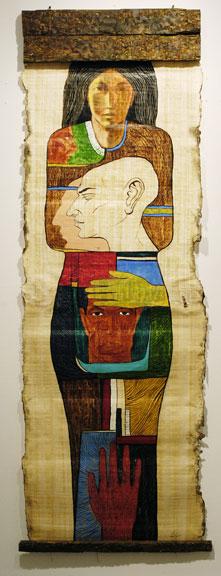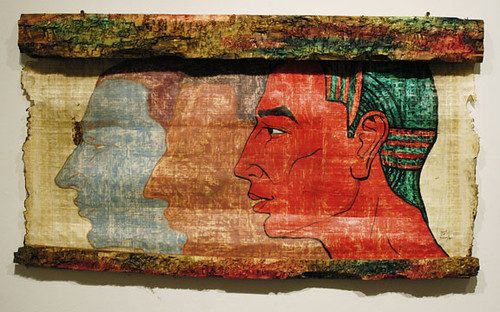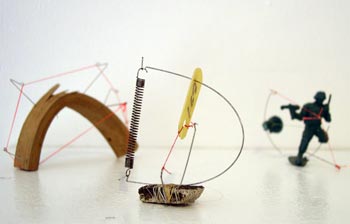Below are two gallery reviews by students in Artblog pal Colette Copeland‘s critical writing class at the University of Pennsylvania.
Matthias Pliessnig at Wexler
By Daniel Li

Providence, a furniture piece by Matthias Pliessnig at Wexler.
Matthias Pliessnig is a furniture artist who questions the boundary between furniture (functional form) and sculpture (non-functional form). His works are created with steam-bent oak, and they incorporate both furniture and boat-making techniques.
Pliessnig’s oak pieces seem to have fluidly shaped themselves to his will, and their forms are aesthetically pleasing and inviting. (Although the prominently displayed “please do not sit” signs discourage any viewers from testing out how comfortable the wood really is). The wood is reminiscent of the natural world, reminding viewers of the simple elegance of a tree, quite different from the square, angular nature of wood in hardware stores.
Also on exhibition were Ad Libs, a series of mixed media pieces — mini works, mostly held together by string and pin — where Pliessnig combines seemingly trivial household oddities into art.
Matthias Pliessnig, to Nov. 1
Wexler Gallery
201 North 3rd Street, Philadelphia
(215) 923-7030
The Yousri Scrolls by Bassem Yousri, at the Knapp Gallery
By Karly Wirth

Living Coffin by Bassem Yousri at Knapp Gallery
How do you capture the essence of a bygone culture in a painting created just yesterday?
In his exhibit, The Yousri Scrolls, Bassem Yousri focuses on ancient Egyptian peoples. Yousri’s paintings resemble those on papyrus scrolls and sarcophagi — he even paints his works on papyrus which he distresses (putting in holes and adding rough edges). Although his intent is not to recreate ancient Egyptian art, Yousri manages to capture the feel of relics from a past civilization.

The paintings focus mainly on profiles and faces of men and women, all bearing Egyptian features and wearing traditional clothing. Some are in the act of speaking or gesturing; others gaze directly at the viewer. The titles in each piece are vague (Diverged, In the pursuit of the unknown land, Dressed up in memories, etc), leaving much to the viewer’s imagination.






